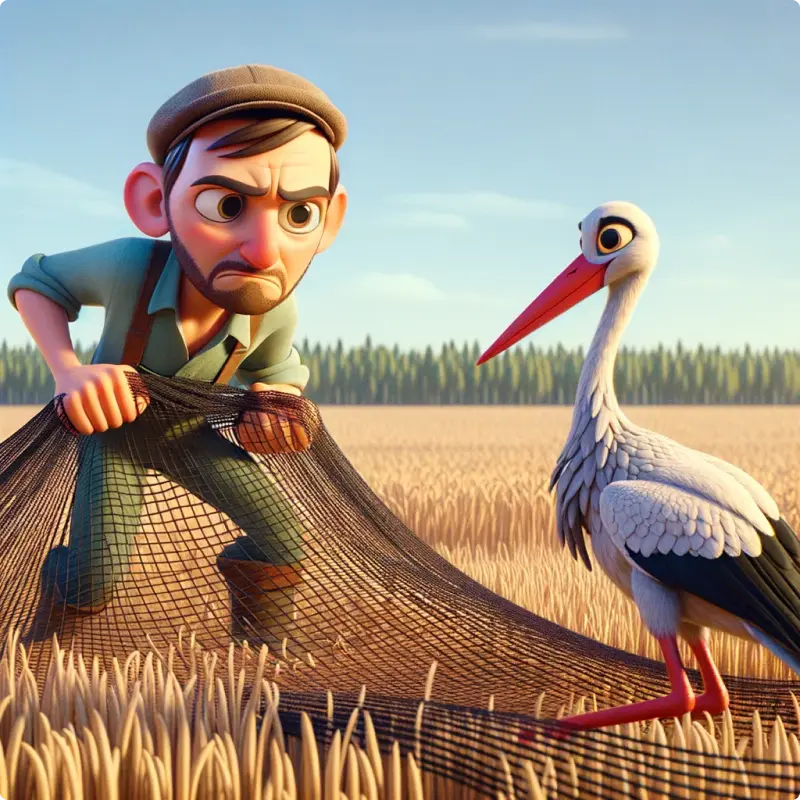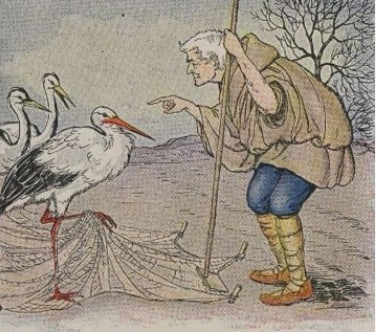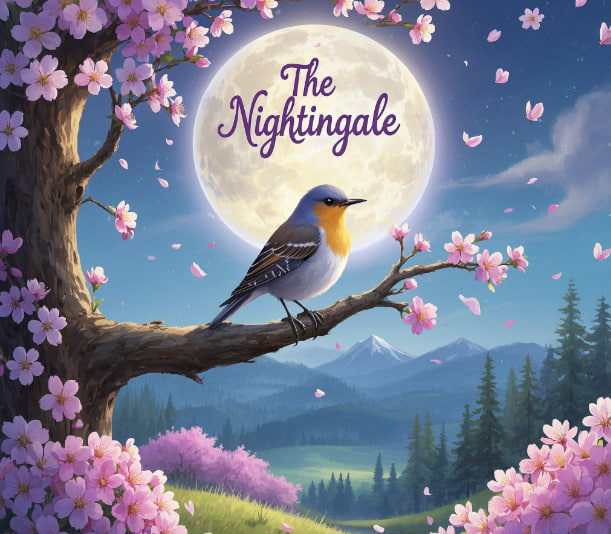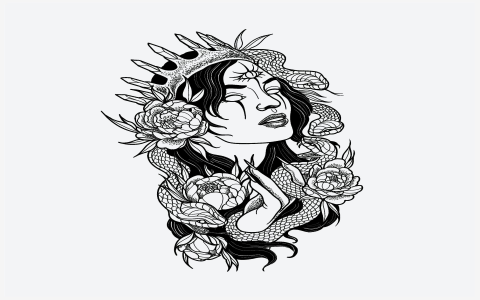The story of the stork and the crane: Trouble Comes When You Choose the Wrong Friend
Today I would like to share with you a very interesting little story from Aesop’s Fables called The Stork and the Crane. Although this story is very short, it tells a very realistic truth: the friends we have around us really do affect how others see us.
I’ll tell the whole story next, and then talk about what it’s really trying to tell us and how we can use it in our lives.
Let the story begin!
Once upon a time, there was a farmer who worked hard every day to plant his fields and feed his family with the food he grew. But one day he noticed that the seeds in his field were often stolen by some birds. These birds were – cranes.

The farmer felt angry and helpless. To prevent them from being stolen again, he put up many nets in the field to catch these “thieves”.
At that time, a bird called a stork and a crane became good friends. They flew together, played together, especially good relationship.
The stork’s mother saw this situation, is very concerned, advised their children said: “Do not always and these cranes together, they specialize in stealing farmers’ seeds, sooner or later will be caught. And you look similar to them, if the farmer can’t tell the difference, take you as a bad guy also arrested, how to do?”
But the stork was unimpressed and said, “I didn’t steal anything, I’m a good bird, the farmer shouldn’t mistake me.
As a result, it did not take long for the farmer to catch many seed-stealing cranes at once. Unfortunately, the stork was also caught in the net.
The stork cried out anxiously, “Let me go! I didn’t steal your grain! I’m a good person, I just happened to be with them.
The farmer laughed and said, “I don’t know if it’s true that you’re a good man. But I saw you with your own eyes with that flock of stealing cranes and you got caught, so you’ll have to suffer the consequences.
Then the stork regretted and sighed, “My mother warned me a long time ago not to make friends with bad people. I didn’t listen, and now I realize it’s too late.”
What is this story about?
On the surface, this is a short story about a bird, but it is really about the questions we often face in our lives:** How much influence do friends have on us? **
Even if you don’t do anything bad yourself, if you often hang out with people who don’t behave very well, others may think you are similar. It’s like the stork who didn’t steal anything, but because he was too close to the crane, he was caught as an “accomplice”.
What can we learn from this?
1. Choosing friends is important
We all make friends, that’s normal. But the problem is that not all friends are worth having.
If your friends often do things that are not trustworthy, such as lying, being lazy, and bullying others, then you should also be careful. Because other people might not bother to find out what kind of person you are, they will only judge you by the people around you.
So be careful when making friends, and choose those who are positive and responsible to be your friends, which will not only benefit you, but also make others trust you more.
2. What others think of us depends a lot on who we’re with.
Many people in this world don’t spend much time getting to know someone. They tend to judge what kind of person you are by the friends, coworkers, and even family you surround yourself with.
For example, if you surround yourself with people who like to learn and work hard, others will think that you are also very progressive; on the other hand, if you always surround yourself with people who are not progressive and complain about their lives all the time, others may also think that you are that kind of person.
So if you want to make a good impression on others, it’s not enough just to work hard on yourself, but also to pay attention to whether the people around you are also positive and active.
3. Quality of socialization is more important than quantity
Sometimes we think that the more friends we have, the better. But what really matters is not how many people you know, but whether those people can influence you in a positive way.
If a friend always makes you feel stressed, depressed, or makes you do something you don’t like, then that kind of socializing is actually a waste of time.
Instead, it’s more relaxing to be alone and do something you like.
So we need to learn to filter our friends and choose those who can make us more comfortable to socialize with.
4. Have your own judgment and don’t follow the crowd
Although others see you through the people around you, we can’t be completely influenced by what others think. We still need to stick to our own ideas and be opinionated.
For example, if your friends are doing something wrong, you can choose not to get involved instead of following along and making mistakes to “fit in.
A truly mature person is one who is able to keep his or her head above water and make the right decisions in complex relationships.
How can you apply the lessons of this story to your life?
(1) Make careful friends and stay away from negative people.
From now on, we can try to pay attention to which friends are positive and which ones always bring us negative energy. For the latter, you can slowly reduce contact to protect your emotions and space for growth.
(2) Take the initiative to reach out to positive people
If you are surrounded by people who are particularly hardworking, optimistic, and self-disciplined, you may want to get in touch with them more often. Their attitudes and habits will slowly change you for the better.
(3) Create your own circle
Everyone can find a circle that suits them. For example, if you like to read, you can join a book club; if you like to exercise, you can find running buddies to run with. In such a circle, everyone encourages each other and makes progress together.
(4) Have the courage to say “no” when it counts.
If a friend asks you to do something you feel is wrong, learn to say no. True friendship is not about forcing you to do something, but about respecting your choices.
To summarize
The story of “The Stork and the Crane” tells us that **the choices our friends make can really affect our lives. **
Even if we have done nothing wrong, if we always hang out with the wrong people, others will misunderstand us and even cause us unnecessary trouble.
Therefore, we must learn to recognize what is a good relationship and what is an unhealthy social circle. At the same time, it is also important to develop the ability to think independently and make decisions that are in our best interest when faced with choices.
I hope this story can give you some inspiration and help you choose your friends and manage your relationships better in your future life and become a more confident and independent person.




